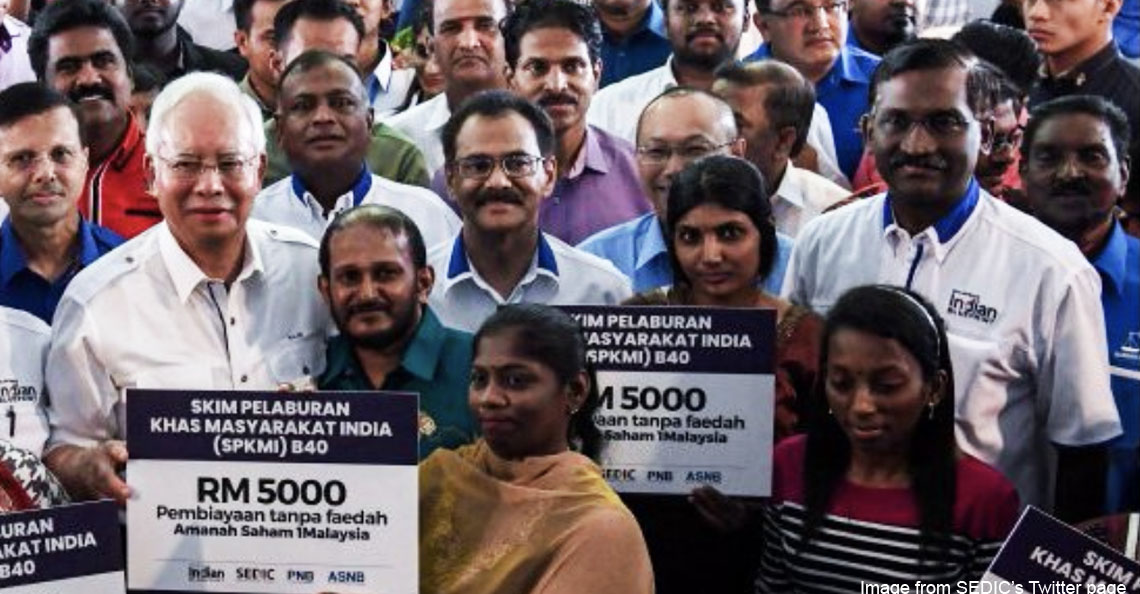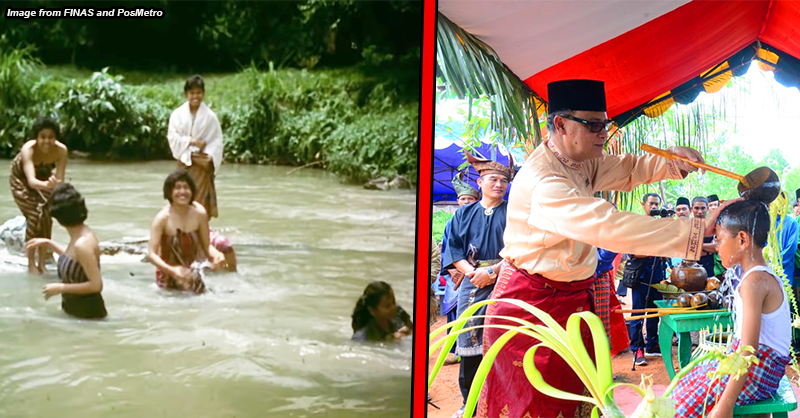12 puzzling questions you may ask at an Indian wedding in Malaysia
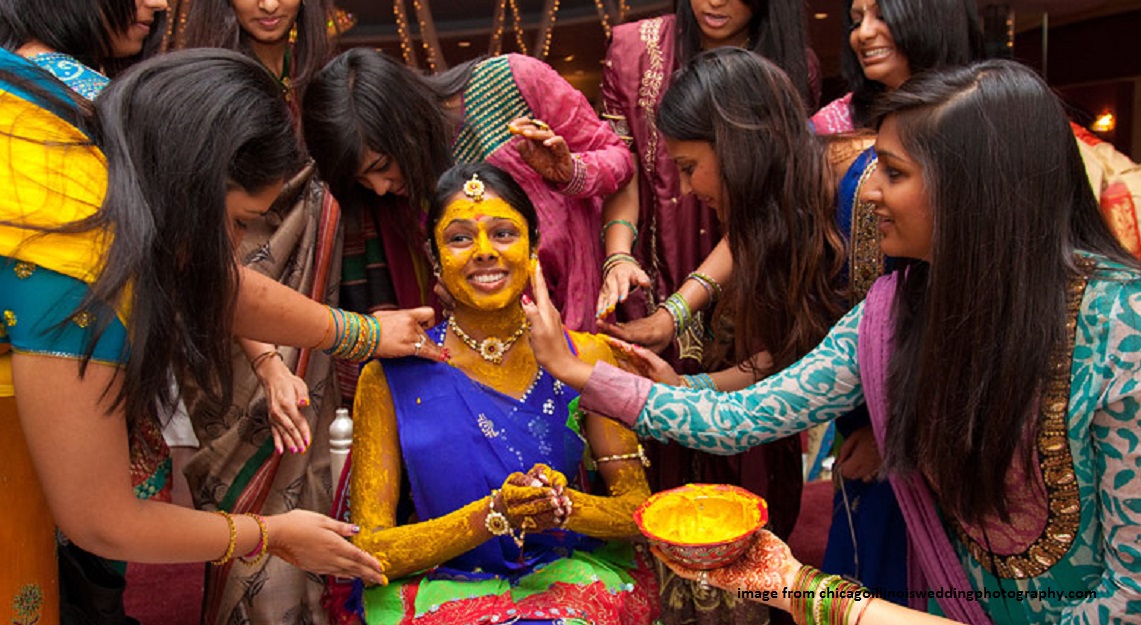
- 2.0KShares
- Facebook1.9K
- Twitter10
- LinkedIn6
- Email12
- WhatsApp67
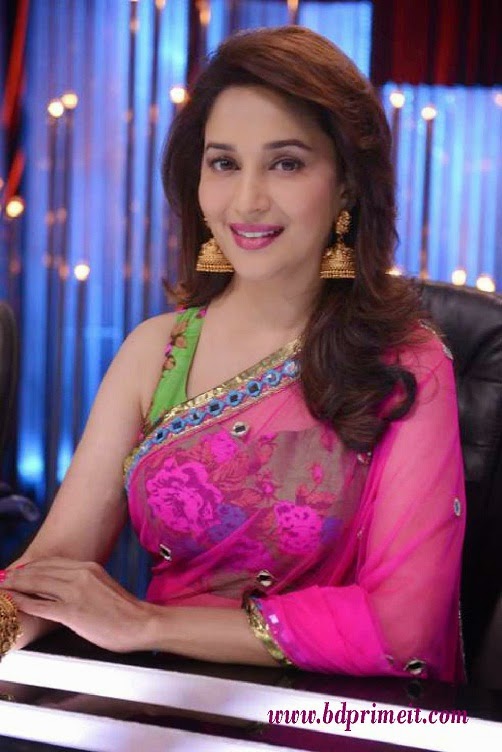
In Malaysia, Indians make up about 6.7% of the population, We Indians take our celebrations very seriously, and we are notorious for our non-stop parades and celebrations that jam up the roads every year without fail. We even have mini Thaipusam (cos one Thaipusam is not enough!).
And another thing that we take very seriously is our weddings.
Before anyone grabs a parang, please note that this article will focus on Tamil weddings ya (because that Indian weddings can mean Tamil wedding, Punjabi wedding, Brahmin wedding, Malayalee wedding, Telugu wedding, Ceylonese wedding or even a wedding at the church).
While the weddings usually follow a particular guideline, it can differ according to the priests who perform the wedding ceremony, or some kepoh aunty who thinks they know it better than everyone else. The baffling part is that no one really knows the meaning behind most of the rituals; we just do as we are told.
So, we went all the way to Bangsar to chat with Mr. Indran, a priest at the Sri Nageshwari temple (the one opposite the Petron near Bangsar LRT). Although Mr Indran is no stranger to conducting Indian weddings, he’s also not your typical priest; he’s also a lawyer by profession.
Oh and this writer’s beloved grandma also helped to fill in some of the gaps (Thanks Patti!).
1. So… who pays for the wedding?
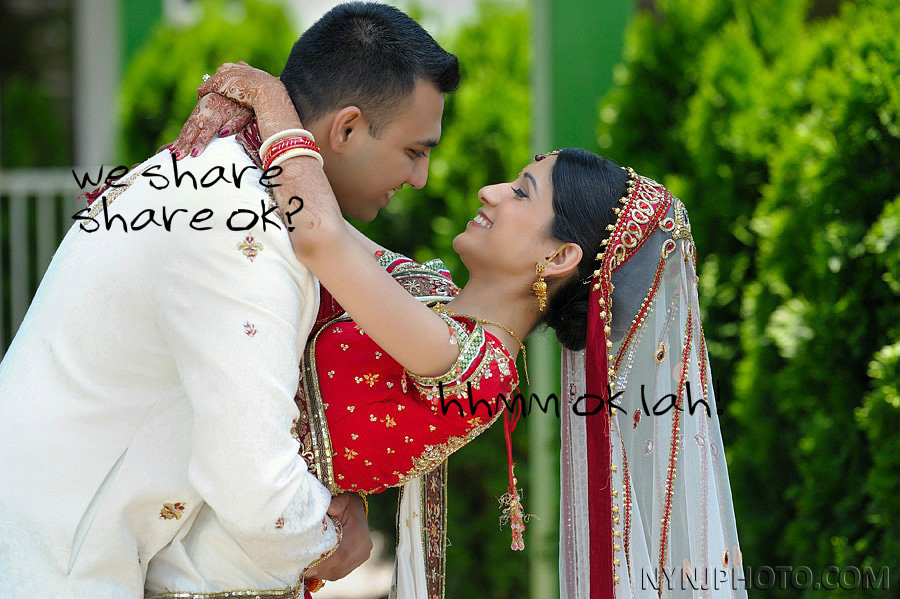
In Malaysia, the wedding cost is traditionally born by the groom’s side of the family, BUT the bride will bear the costs of the wedding reception. Strangely, that is only if the bride and groom come from two different states. If they’re both from, say, Penang, then they will share the cost la.
It could differ if you’re a Punjabi or a Malayalee; but most couples today choose to go Dutch regardless of their ethnicity because it’s more practical.
“A simple, temple wedding, with basic setting can cost anywhere between RM5k to 10K. But that is only if the wedding is held far away from the city, AND in a temple in Klang for example.” – Mr. Indran
A lavish wedding not in a temple and in the KL area can start from RM 180K and go on until you run out of fingers and breath to calculate the costs. The costs includes the hall rental, fee for the priest, traditional musicians, the decorations, the photography, videography, and food. This is not even including other things yet, like car rental, jewelry and stuff.
“It really all depends on where, and how lavish you want it to be.” – Mr. Indran
2. No need to RSVP one ah?
This might come as a shock to the Facebook generation, but you actually don’t need to RSVP for an Indian wedding.
According to Mr. Indran, it’s understood that there will be at least 1-2 people attending from each family that is invited. There is no restriction to attendance, and honestly, based on prior experience, you can just show up whenever you like, whatever time you want, and with as many people as you want to bring. So long as you show up, your hosts will be happy and will thank you for your time!
Yes, you can also just show up just in time for lunch (secretly lah). OMG then what happens if they run out of food!? Don’t worry, it’s the hosts fault, not yours, because it’s their responsibility to make sure that no one leaves the wedding with an empty stomach (more often than running out, they have plenty of leftovers that they’ll sometimes ask you to tapau).
3. Some of them get married at 4 am?!? Not sleepy ah??
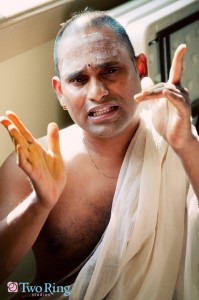
With other cultures, the DATE can be very important, but with us Indians, the TIME is also equally important. Whether you’re buying a car or getting a haircut, cutting your nails or moving into a new house, the time and date that you choose do it is believed to have a significant impact on you. Seriously, my mom used to yell at me whenever I took a nap at 7pm, cos that’s the auspicious prayer time, and I should be standing next to her chanting mantras and not curled up in bed.
Usually, a priest in the temple will be consulted for the best date and time, also known as the muhurtha dates. According to Mr. Indran, the muhurtha dates are calculated based on the bride and groom’s date of birth and star sign (Indian star sign, not the ones you see in the Star newspaper ok!). So, if according to him the best time to get married is at this particular day at 4.15 am, so be it! You can even just Google if you wanna know, but always better to have personal consultant la.
4. Wait… you can only eat AFTER the wedding!?
It can take anywhere between 2-3 hours for the wedding to complete, which can be quite difficult for those 4am weddings (and especially since food is only AFTER the wedding). There are a lot of rituals involved; you can’t run away from that when you’re Indian. But fret not, we walk you through it:
(Note: this is only the simplified guideline, there are waaaaaay more underlying rituals involved)
- The welcoming of the groom & religious rites for the groom; where the groom and his family are greeted by the bride’s family and relatives at the temple.
- The groom’s best men, usually the bride’s brother (which you can’t choose btw) will wash the groom’s feet and put a toe ring on it (toe-ring ceremony). The groom will then present a gold ring to his brother in law as gratitude. The bride also goes gets a toe-ring from her husband, but later after the thali ceremony. (10mins)
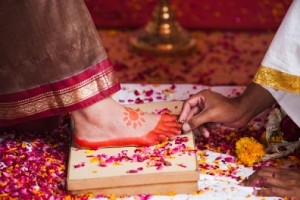 Welcoming and giving away the bride. After some initial rituals, her father gives away the bride with the consent of her mother, in presence of the groom’s parents. After more rituals (told ya, we’re Indians!), the bride then leaves to change her saree. (20 minutes x 3 = 60 mins)
Welcoming and giving away the bride. After some initial rituals, her father gives away the bride with the consent of her mother, in presence of the groom’s parents. After more rituals (told ya, we’re Indians!), the bride then leaves to change her saree. (20 minutes x 3 = 60 mins)- After that is the knotting of the thali around the bride’s neck. It has to be tied in 3 knots, followed by the groom reaching around her to place the kum kum or red vermillion on her forehead, sorta like to say you’re mine now. Last time, the married women MUST have the kum kum on her forehead all the time, but these days no la. You can learn more here. (30 mins)
- Then add another 30 mins between each of these points, usually waiting for the priest or bride to change.
Tip: If you are weak – like me, make sure to have some snacks with you so you don’t get too hungry or pass out while waiting for the ceremony to end. If you are easily bored, no, don’t play with your phone, walk around and talk to people, and take a walk around the temple and admire its beautiful, ancient architecture, but come back quickly when you hear the “ketti melam”, the music you hear when groom is tying the thali around his bride.
To hear the “ketti melam”, listen closely to the music that comes on at 21:54 🙂
Popular South Indian stars Surya & Jyothika getting tying the knot in September 2006.
5. Why is the bride changing her saree so many times?
The bride has to change twice only la. When she arrives, she wears a saree bought by her future husband for their engagement ceremony. After the rituals and giving away ceremony as explained above, she will then change into the saree given to her by the groom for the wedding.
6. What’s with the rice throwing?
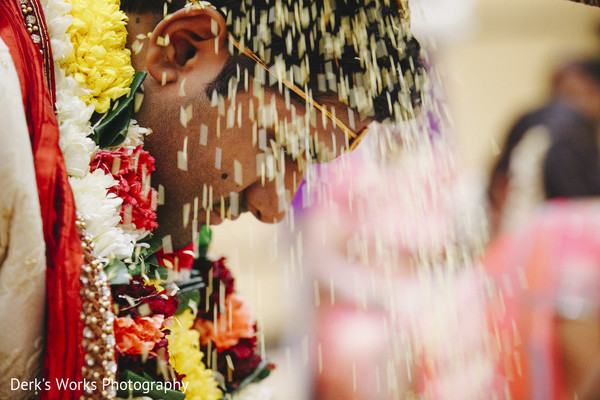
The rice grains are used as a form of blessing, symbolizing prosperity. The rice is usually laced in turmeric powder. You actually have to throw it on them three times for good luck, but most of time the place is so packed you end up just throwing the rice at the person in front of you, who will then turn around and give you a death stare. Just do kesian face and you’ll be fine! 😀

7. Excuse me, where is my chicken?

This is a mistake that I myself have made multiple times. Usually, weddings that take place in temples don’t serve meat, only vegetarian food. If the wedding is at a hall, then you can expect to get some delicious ayam masak merah. Otherwise, brace yourselves for some delicious wedding-banana leaf-vegetarian-temple food!
Before you leave the wedding, it is customary to say goodbye to all the elderly people, especially the parents of the bride. Make sure to compliment them on the food and decorations; those are usually the most anticipated comments!
8. Why does the bride looks like a Christmas tree? Are all those real jewellery?
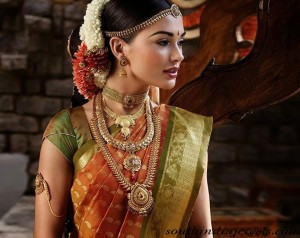
Wearing jewellery, especially gold, is essential in the Hindu culture and tradition, especially in weddings. From the moment you were yanked out of your mother’s womb, till you get married off to someone, there is no escape; you need to have some gold on you; it can be a necklace, earrings, bracelet, ring, nose ring or whatever you like.
Mr Indran bluntly concludes that it’s actually about status. Typically, part of the jewellery usually comes from the bride’s parents; the groom’s parents will then top up, and usually will try to outdo the bride’s parents. However, if you’re in Kerala, 90% of the jewellery will have to come from the bride’s side.
“In Malaysia, it’s not too grand, unless it’s a Chetti wedding, then you get to see the real deal!” – Mr. Indran
It’s also a symbol of prosperity and good luck; the more jewellery you wear, the brighter and more radiant you look, so the more prosperous your life will also be. If you’re like super rich, all your jewellery pieces can be authentic, and that itself could cost a few hundred thousand. However, most people these days choose to wear gold plated ones, or simply imitations, for safety reasons.
9. Why do Indians always receive weird amounts of cash?
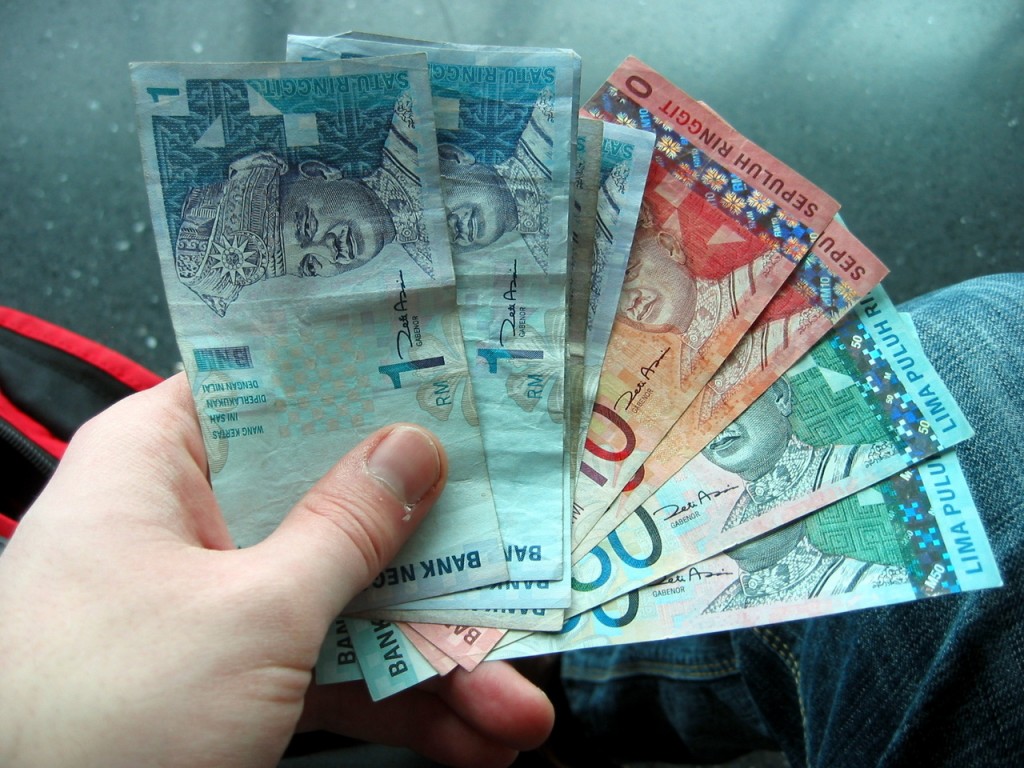
Most people at Indian weddings do not bring gifts; they bring envelopes filled with money. Also, it kinda helps them to pay back for the wedding and they have a bit of capital to start their new lives.
The minimum amount for the envelopes, also known as “moyyi”, is RM 51. Why 51? Cos your number must again be an odd number AND you can’t have a ZERO in it (like wishing the newlyweds zero prosperity. Since it’s compulsory for you to write your name on the envelope and people know who you are and what you do for a living, people usually feel pressured to put more. Gone are the days where you can just get away with RM 10 or RM 20! Oops sorry, we meant RM 11 or 21 😉
Note: One of our readers, Jayaprakash Jayachandran said the reason for this could be because odd numbers cannot be split into two, so it symbolizes that the married couple will be together forever. That’s deep yo!
10. Why were people sprinkling water on me at the entrance?

Don’t worry, it’s not just any water ok but rose water. Guests are heartily welcomed to Indian weddings by sprinkling rose water on them, and thus perfuming them.
Rose water is known for its multifarious benefits; it cures eczema, dermatitis, heals cuts and wounds, and also nourishes your skin so you have no reason to complain. Although, as a kid, I remember running away from the women at the entrance holding the sprinkler! My mom would then reprimand me saying that was rude, of course.
11. Why do they have to exchange flower garlands for like, 30 times?
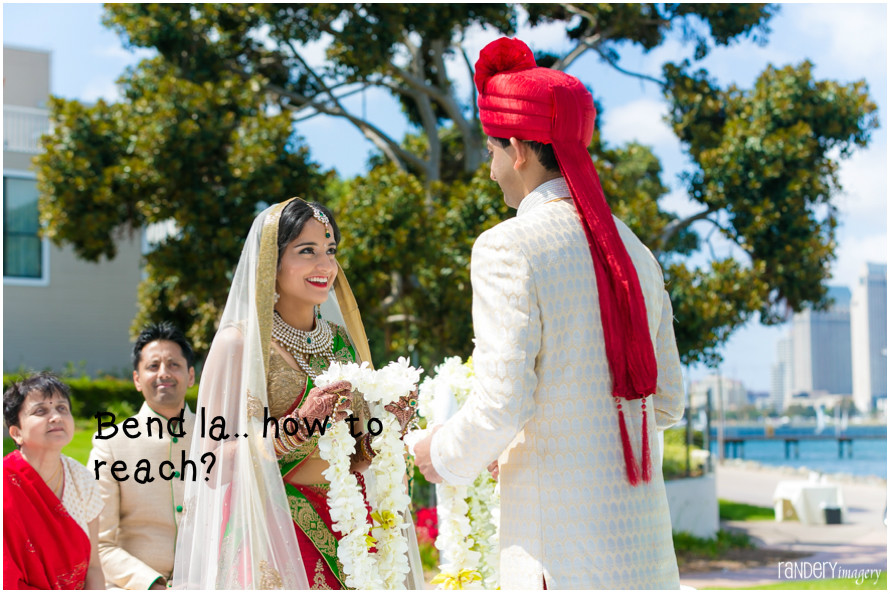
After the thali ceremony, you will see the bride and groom exchanging garlands multiple times. This is not for play-play ok. Mr. Indran explains that back in the days, 9 out of 10 marriages are arranged so this ritual symbolizes acceptance of one another or them basically saying “I accept you as my husband/ wife”. This ceremony is called “maalai matruthal”, or, exchanging garlands.
Basically everyone just needs to double confirm k?
According to Mr. Indran, this is usually done at least three times and can go up to 20-30 times, depending on who wants to participate! Usually, it’s done once by the bride, once by the groom, once by their parents, and maybe one or two close relatives. The catch is that it always has to be in an odd number (again!), so about 5-7 times is just good. (But in India where families are huge, they can go up to like 51 times)
12. Some marriages are still arranged (!)
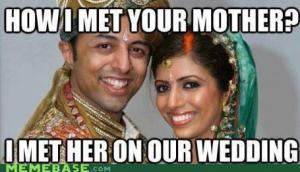
Of course, gone are the days (mostly) of arranged marriages at 12 or 13, but now… when moms start worrying about their single daughters’ livelihoods (anywhere between the ages of 24-30), the question does come up (yes, even to me).
These days however, it’s more like your mother acts as your Tinder filter. She might give you a few options on candidates, and see which ones you click with. So it’s not fully-arranged la.
So you see, Indians not THAaaaat different right?
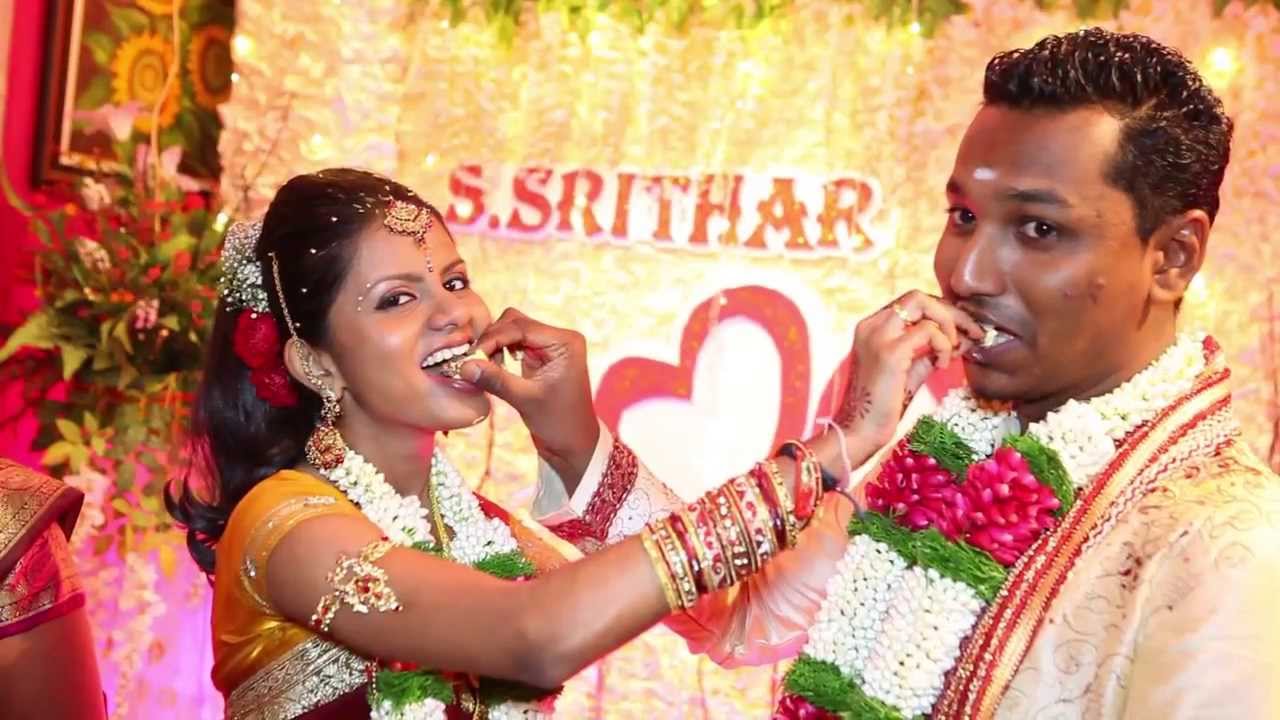
Money packets- check.
Banquet – check.
Worried mother-in-laws. Check.
Exorbitant bills. Check.
So as you can see, despite the differences, there are also alot of common themes in all Malaysian weddings.
In recent times however, there has been a lot of criticism, not only against Indian weddings, but most weddings in Malaysia now that cost so expensive, and then couples begin their marriage phase with debts and financial problems. Some even take out massive financial loans just so they can have a lavish wedding. But maybe we should start to remember the real reason of marriage, the love and bond between two people celebrated in the presence of your loved ones; not to throw a big lavish party that you spend years paying off.
Having said that, if you have never been to an Indian wedding, you’re in for a real treat of rich culture and tradition, and of course, great food!
- 2.0KShares
- Facebook1.9K
- Twitter10
- LinkedIn6
- Email12
- WhatsApp67


